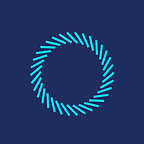Research Driven Ideation: the inception of Trunk Tools
The speed of innovation is increasing. And as it does, more brilliant scientists and technologists will be looking to contribute to our world — even if they aren’t sure about exactly where to start.
Recently we launched Research Driven Ideation (RDI) to offer these visionaries a framework for researching, mapping, and unearthing brilliant ideas. This framework has already helped hundreds of Stanford GSB students and students at Berkeley, MIT, and Harvard to deeply research an industry, dive into a problem, and determine an idea. The first steps are available now for current and future entrepreneurs looking to find their inspiration.
And today, we will further break down the RDI framework by profiling the founders who have successfully undertaken this journey and what came of their research.
RDI Alum: Dr. Sarah Buchner
Industry Explored: Physical economy
Resulting Company: Trunk Tools
Dr. Sarah Buchner learned about the Research Driven Ideation framework while attending the Stanford Graduate School of Business. Like many students, she wanted to make the most of her time at Stanford and form a company while she worked to complete her studies.
Sarah brought 20 years of prior construction industry experience to Stanford along with a Ph.D. in Civil Systems Engineering and Data. She knew she wanted to use the RDI process to analyze the construction industry and pinpoint where a data-driven solution would best serve an industry that had already been pitched more than a few unsuccessful applications for contractors, builders, engineers, and managers. She chose to undertake the process sans co-founder and with Innovation Endeavors Partner, Scott Brady, as her advisor.
Below is an interview that details Sarah’s experience with RDI and the resulting idea it led to.
Let’s start with you. Why did you want to embark on the RDI journey?
I like rigorous research. And I didn’t trust my instincts enough to just run with a “great idea.” I knew the industry I wanted to be in and felt I had an advantage, just given my background. And I know my skill set is starting something and making things happen.
So I thought, why rely on the few data points that create my gut instinct when I could rely on actual research and data to decide which problem to go up against and then which solution to build?
Was construction the only industry you considered pursuing?
I’ve been in construction for 20 years. I definitely had a phase at Stanford where I considered doing something more “sexy” because everybody was doing stuff that was very sexy. But with startups, the market needs to be big enough to make it work, you know? You can definitely do this in construction. And there’s not a lot of players that go into construction.
Did you have a clear hypothesis when you set out on your RDI journey?
I knew I wanted to build a company that I could run as CEO and not where my background wouldn’t fit the role. I also wanted to build a company that could make a lot of revenue quickly. I had a bunch of guidelines and questions that helped me make a decision about what solution to go after.
I wound up interviewing about 50 executives and 200 construction workers in the United States. I asked every single one: what’s your biggest problem? That helped me refine what I wanted to go after. One problem became clear very soon, and that was the labor shortage. Then I backfilled the information I got from the interviews with all sorts of data and studies to determine my solution.
What did you find to be most challenging when you set out to explore this industry and test different hypotheses?
The most time-consuming part was actually setting up all these interviews with executives. There was a lot of networking, and during these interviews, it was difficult not to steer them into the solution I had in mind. For the first few interviews, I didn’t have a solution in mind. But over the course of these conversations, you would come up with a thesis and do a bit of thesis testing. Still, I also wanted to keep the conversation open enough for them to develop different solutions or approaches.
And so that was the struggle. I’m a person who loves data-driven decisions. I don’t buy into my gut feeling too much. The RDI process is very focused on understanding the market data that you have.
It was a year before I knew what problem I wanted to solve. And then another half of a year to determine the different solutions that I liked and then select the solution that I thought would be most successful.
Tell us about your solution and the company that came from this work.
Trunk Tools solves for the labor shortage in construction manufacturing. We do this by making the existing workforce more productive through AI-based incentive software and instant incentive payments for high-quality work output versus just paying workers for the hours they put in.
Do you have any final thoughts you’d like to share about the RDI process?
What I like about RDI is that it forces you to find data for your decisions super early, which I don’t think works for everybody. I think it works perfectly for people like me. For B2B products, this is an incredible approach because businesses are mostly rational in their decision-making. You have to approach rational decision-making with a data-driven approach and a data-driven solution.
